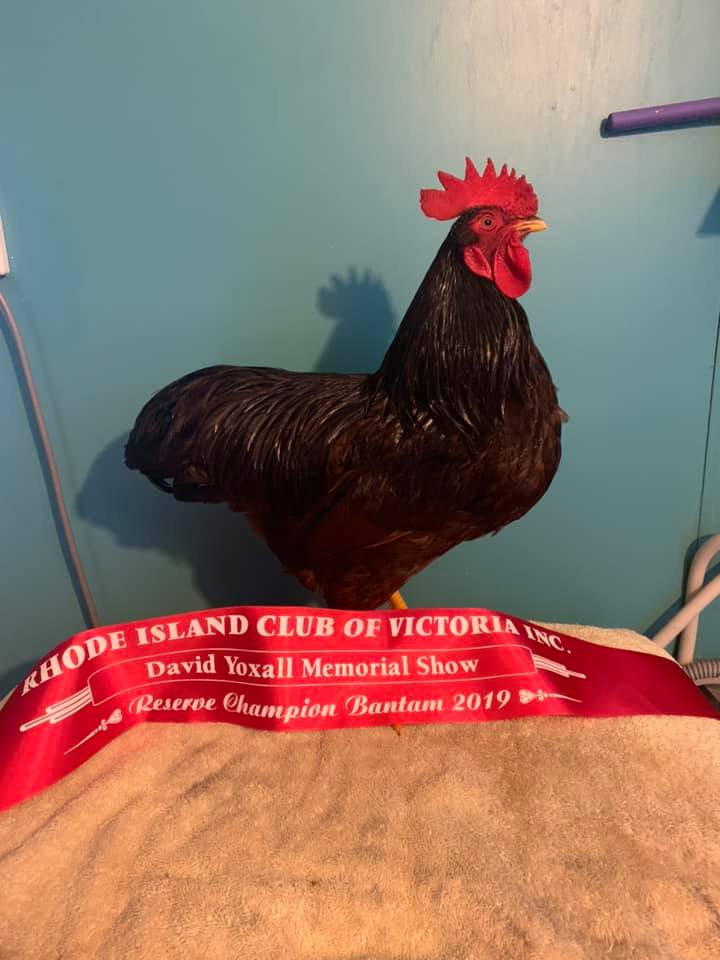Mitchell’s Passion for Poultry Shows
Mitchell is heavily involved in poultry shows, we recently asked him what he liked about them and what challenges he typically faced with competitions.
Competition
Overall, he enjoys the competitive nature of poultry showing (Mitchell is a competitive person by nature) and it’s friendly competition too! When poultry season isn’t on, he’s showing horses over Spring and Summer. He’s also a perfectionist – he likes to do things ‘right’, never half measured. When he was getting back into poultry breeding, he took 18 months to find the right Rhodey Bantam to buy. They had to be perfect – show condition perfect! If you’re getting into showing Mitchell recommends buying the best birds you can afford. He likes going to shows where they have feature breeds, such as a recent Colac show he was involved in where they had an Australorp feature breed. A highly respected judge who knows the breed will come along. It’s also a great opportunity to compare how your particular breed of bird compares with others. It gives him an opportunity to look at how his breeding plan has gone and his compares to others.
Not winning isn’t the end of the world for Mitchell, he finds through comparing his birds with others that he can determine if he likes what he sees within his birds and feels happy with what he’s achieved.
Community
He also finds poultry competitions good for meeting people and developing friendships. Travelling to competitions throughout the state gives him an opportunity to meet other breeders. It can be a real family experience too! You can see parents, grandparents and grandkids coming along and showing birds together. Sometimes you’ll have someone showing a breed that has been handed down to them from their grandparents. Recently Mitchell took 18 birds to Echucca and he says they travel really well in the car.
Challenges with breeding for competitions
Keeping your birds in good condition. He has had past trouble in the past with feathermite, which eats away at the feather and makes the bird look ratty. The solution is to pull that damaged feather out, but that means it’ll be around 6-8 weeks before the feather is grown back. So the bird can end up looking patchy and not show ready.
Some will leave their bird in an enclosure during show season, but Mitchell likes to let his birds roam around on grass and enjoy a dust bath. It may create a bit of work for Mitchell, but he believes the birds are happier and still look their best for show days.
Another consideration is keeping the roosters away from the hens – the roosters can end up breaking some of the hens’ feathers! So it’s important to keep the hens segregated from the roosters.
 You have to really know your breeds, to know when to hatch them. A Rhodey Bantam takes about 6-7 months to bloom and look really good. So if you want to enter an August show you have to count back 7 months. Leghorns though, they grow a bit faster so you hatch them a bit later. A male Pitt tends to look really good when they’re 8-9 months. So planning for poultry shows is a lot of long term planning!
You have to really know your breeds, to know when to hatch them. A Rhodey Bantam takes about 6-7 months to bloom and look really good. So if you want to enter an August show you have to count back 7 months. Leghorns though, they grow a bit faster so you hatch them a bit later. A male Pitt tends to look really good when they’re 8-9 months. So planning for poultry shows is a lot of long term planning!
Pullets and hens have a very short window when they’re at their optimal peak (looking their best) – 2-3 weeks, maybe a month. Poultry showing season tends to go longer than this window! So if the plan is to go to early, middle and late poultry season shows you have to plan well ahead. This means taking, for example, 60 eggs and staggering when you hatch them in batches. So you’ll hatch 20 for the early shows, 20 for the middle and 20 for late poultry shows. This gives you the opportunity to enter birds in many more poultry shows.
But all this planning can be thrown out if there’s like a heatwave and it really knocks the birds around and they don’t end up looking so great. Some breeds don’t feather up nicely when it’s too hot for them.
-Mitchell Carrigan-Walsh


